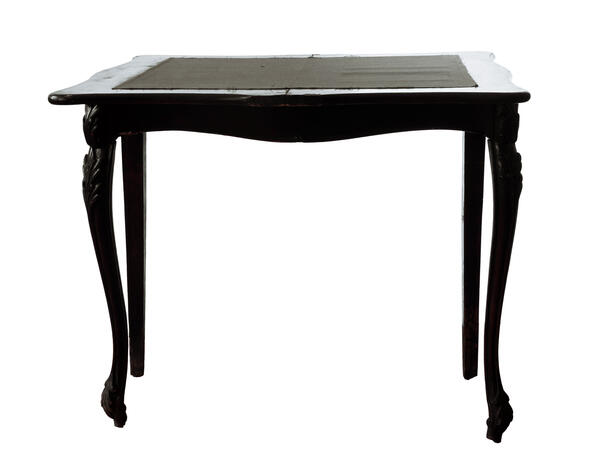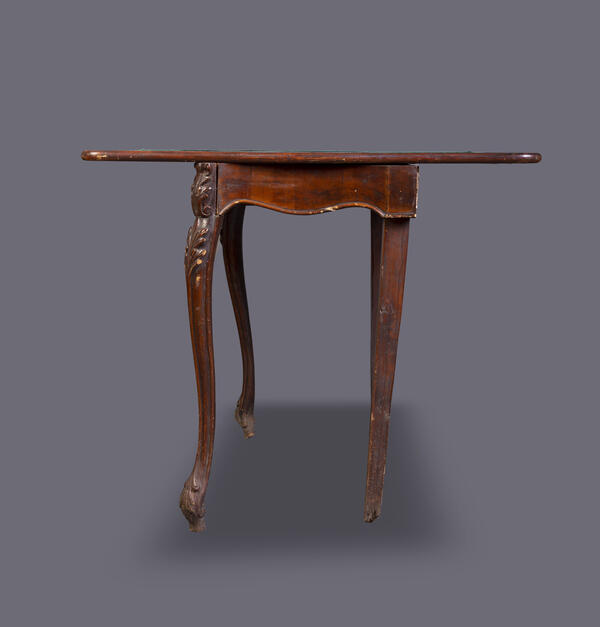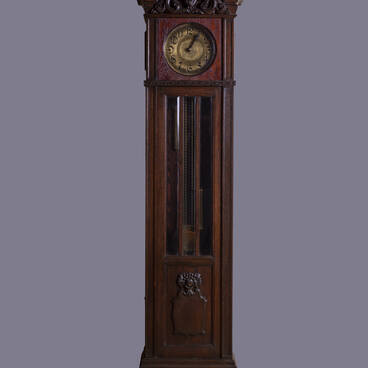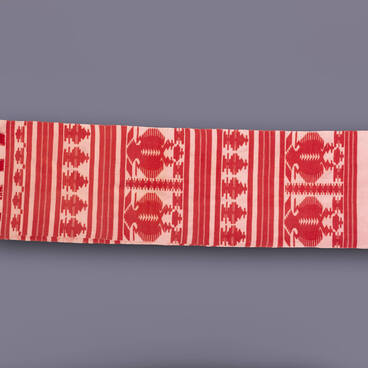The card table on display dates from the first quarter of the 19th century. It is a folding wooden table, covered in lacquer. There is a small drawer inside. The tabletop is rectangular with a square insert made of green cloth, and can be rotated 90 degrees. The size of the insert is 70×70 cm. The corners of the tabletop are rounded and the two edges of the tabletop are carved to form a pattern when folded. Two legs are straight, the other two are curved. Decorative elements are carved on the top and bottom of the curved legs. Card tables first appeared in Spain, which is where the ombre card game originated, giving its name to tables of this type in Russia (lomberny). The design has changed over time, but the general features have remained the same.
The first versions of card tables date back to the 16th century, they were ordinary tables, the surface of which was covered with cloth for comfort. The tables became popular in the 17th century, and were most widely used in France and England, where they appeared in their classic form, with green cloth and elaborate decoration. But the ombre card game itself, thanks to which this piece of furniture came into being, was short-lived and was soon superseded by preferans and whist, which continued to be played on card tables, as they suited the purpose perfectly.
Such tables were always made of precious types of wood and decorated with carvings and other decorative elements; therefore, their cost was high. For this reason, card tables belonged more to items of luxury than to ordinary furniture and were used exclusively in the wealthy strata of society. The table started to be called “lomberny” in Russia. Nowadays, this name exists only in Russian; in the West such tables are called gambling tables and have nothing to do with their origin.
The table belonged to the merchant Simonov’s family. Illarion Illarionovich Simonov was engaged in trade of bread, meat, wax, leather, had his own stud farm, was engaged in supplying pharmacies with medicinal herbs, which were collected on the territory of the present “Belogorye” reserve. He was twice elected the town mayor, was famous for his charity work, and was an honorary citizen of Stary Oskol.
The first versions of card tables date back to the 16th century, they were ordinary tables, the surface of which was covered with cloth for comfort. The tables became popular in the 17th century, and were most widely used in France and England, where they appeared in their classic form, with green cloth and elaborate decoration. But the ombre card game itself, thanks to which this piece of furniture came into being, was short-lived and was soon superseded by preferans and whist, which continued to be played on card tables, as they suited the purpose perfectly.
Such tables were always made of precious types of wood and decorated with carvings and other decorative elements; therefore, their cost was high. For this reason, card tables belonged more to items of luxury than to ordinary furniture and were used exclusively in the wealthy strata of society. The table started to be called “lomberny” in Russia. Nowadays, this name exists only in Russian; in the West such tables are called gambling tables and have nothing to do with their origin.
The table belonged to the merchant Simonov’s family. Illarion Illarionovich Simonov was engaged in trade of bread, meat, wax, leather, had his own stud farm, was engaged in supplying pharmacies with medicinal herbs, which were collected on the territory of the present “Belogorye” reserve. He was twice elected the town mayor, was famous for his charity work, and was an honorary citizen of Stary Oskol.





